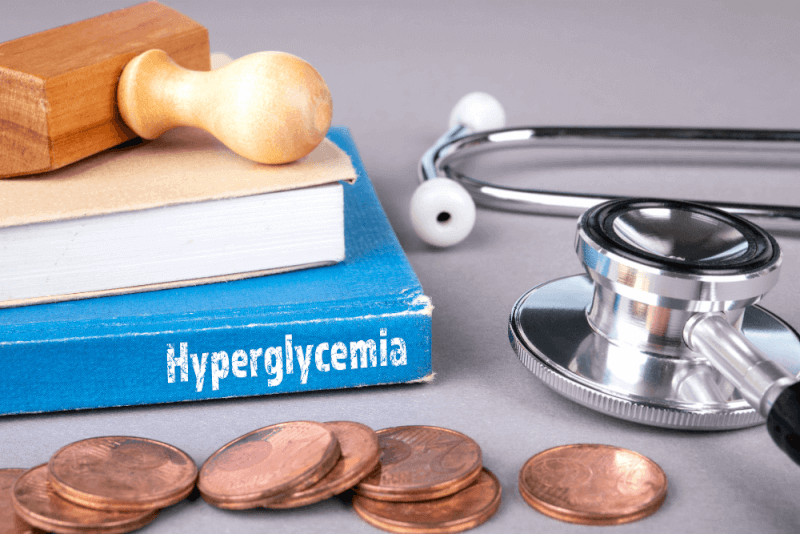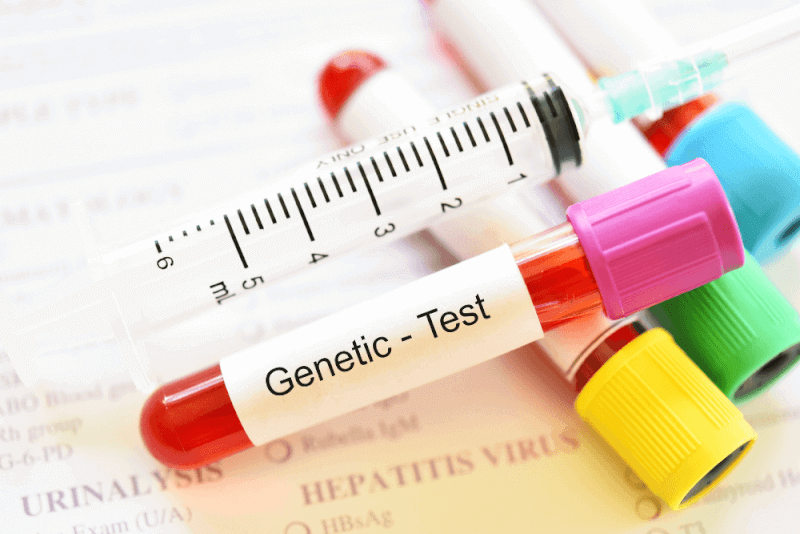30-Second Summary
- Dwarfism is generally defined as an adult height of 147 cm (4 feet 10 inches) or shorter. Among individuals with dwarfism, the average adult height is approximately 125 cm (4 feet 1 inch) for women and 132 cm (4 feet 4 inches) for men.
- This type, known as growth hormone deficiency or pituitary dwarfism, occurs due to an insufficient amount of growth hormones in the body.
- Primordial dwarfism, a form of proportionate dwarfism, is typically diagnosed between the ages of 3 and 5.
- Several factors are considered to determine whether a child has dwarfism. Additionally, specialists in endocrinology and genetics may need to be consulted.
What is Dwarfism (Nanism)?
Dwarfism is a condition characterized by short stature due to genetic or medical factors. It is generally defined as an adult height of 147 cm (4 feet 10 inches) or shorter. Among individuals with dwarfism, the average adult height is approximately 125 cm (4 feet 1 inch) for women and 132 cm (4 feet 4 inches) for men.
There are many different causes of dwarfism, which are broadly classified into two categories. The first is disproportionate dwarfism, where some parts of the body are smaller while others are of average or above-average size. Conditions that cause this type of dwarfism typically affect bone development.
The second category is proportionate dwarfism, in which all parts of the body are reduced in size proportionally, maintaining the appearance of an average-sized body. At birth or during early childhood, certain medical conditions can limit overall growth and development.
Some individuals prefer the terms "short stature" or "short people" instead of "dwarf" or "dwarfism." It is important to be sensitive to an individual’s preference regarding terminology. Short stature conditions do not include familial short stature, which is considered a typical variation with normal bone development.
Types of Dwarfism (Nanism)
There are approximately 400 types of dwarfism. The most common types include the following:
Achondroplasia
Achondroplasia is the most common form of dwarfism, accounting for 70% of cases. It occurs in approximately 1 in 26,000 to 40,000 births and is noticeable at birth. Individuals with achondroplasia typically have a relatively long torso but shortened upper limbs. Other characteristics include:
- Large head and prominent forehead
- Crowded and misaligned teeth
- Protruding chin
- Flattened nasal bridge
- Hyperflexibility (double-jointedness)
- Flat, short, and broad feet
- Bowed legs
- Forward curvature of the lower spine (lordosis)
Pituitary Dwarfism
This type, known as growth hormone deficiency or pituitary dwarfism, occurs due to an insufficient amount of growth hormones in the body. In pituitary dwarfism, children have normal body proportions but are significantly shorter than average.
This condition can be present at birth or develop later in life. It occurs when the pituitary gland produces very little growth hormone. It may result from genetic defects, severe brain injuries, or being born without a pituitary gland. In some cases, the exact cause remains unknown. In certain instances, a deficiency in growth hormone is accompanied by a deficiency in other essential hormones.
These hormones include vasopressin, which controls water production in the body; gonadotropins, which regulate the production of male and female sex hormones; thyrotropins, which control the production of thyroid hormones; and adrenocorticotropic hormone, which regulates the adrenal gland and its associated hormones.
Primordial Dwarfism
Primordial dwarfism is a type of dwarfism that begins in the womb and results in smaller body size throughout all stages of life. Also known as "primitive dwarfism," individuals with this condition are significantly smaller than their peers even during the fetal stage. Primordial dwarfism, which is a form of proportionate dwarfism, is typically diagnosed between the ages of 3 and 5.
Experts often diagnose this condition when a fetus appears smaller than expected for its gestational age or shows signs of intrauterine growth restriction on ultrasound. Generally, individuals with primordial dwarfism are born with very low birth weight. After birth, their growth continues at an extremely slow rate, and they remain significantly behind their peers in both height and weight throughout their lives.
Most cases of short stature are caused by skeletal or endocrine disorders. Primordial dwarfism includes five subtypes and is considered one of the most severe forms among the 200 types of dwarfism. There is no effective treatment for this condition, and individuals with primordial dwarfism rarely live beyond the age of 30.
Skeletal abnormalities can manifest from the cervical spine down to the feet. As a result, the following changes may be observed:
- Cervical instability
- Cervical kyphosis
- Scoliosis or sideways curvature of the spine
- Hip and knee flexion contractures
- Degenerative changes in the hip and knee
- Subluxations of the shoulders and radial head
- Clubfoot
Causes of Dwarfism (Nanism)
Several potential factors can cause dwarfism. A change in a person's DNA accounts for a significant number of dwarfism cases. However, the exact cause of some types remains unknown. The causes of dwarfism include:
- If parents or other family members are short, it is expected that the individual may also have short stature.
- Genetic mutation
- Growth hormone deficiency
- Some children are short in early childhood but experience later growth spurts. A similar pattern is often seen in other family members.
- Malnutrition
- Premature birth
- Short fingers
- A wide gap between the middle and ring fingers
- Limited range of motion in the elbows
- A disproportionately large head compared to the rest of the body
- Prominent forehead
- Flattened nasal bridge
- Bowed legs, which worsen over time
- Progressive curvature of the lower spine
- Adult height: 125 cm (4 ft 1 in) for women, 132 cm (4 ft 4 in) for men
- Very short torso
- Short neck
- Short arms and legs
- Medium-sized hands and feet
- Round and broad chest
- Slightly flattened cheekbones
- Structural changes in the hip bones causing inward rotation of the thigh bones
- Bent or deformed feet
- Instability in the neck bones
- Progressive worsening of upper spinal curvature leading to kyphosis
- Worsening herniated disc over time
- Vision problems
- Hearing issues
- Arthritis
- Joint movement difficulties
- Adult height ranging between 91 cm (3 ft) and 122 cm (4 ft)
- Height below the 3rd percentile on standard pediatric growth charts
- Slower-than-expected growth rate for age
- Delayed or absent sexual development during puberty
- Correcting the growth direction of bones
- Expanding the openings in the vertebrae to reduce pressure on the spinal cord
- Stabilizing the spine
- Reshaping the spine
- Draining excess fluid around the brain in cases of hydrocephalus
- Delays in the development of motor skills
- Hearing loss due to frequent ear infections
- Bowed legs
- Difficulty breathing during sleep (sleep apnea)
- Pressure of the skull on the spinal cord
- Hydrocephalus
- Dental problems
- Severe hunching of the back
- Back pain
- Breathing difficulties
- Narrowing of the lower spinal canal
- Arthritis
- Weight gain
- Breathing difficulties during pregnancy
- Pelvic size and shape preventing normal childbirth
- Heart disorders
- Lack of sexual maturity
Dwarfism is typically caused by a genetic mutation. The gene mutation may occur spontaneously or be inherited. Diastrophic dysplasia and, in general, spondyloepiphyseal dysplasias are inherited in a recessive manner.
This means that for a child to be affected, they must inherit two copies of the mutated gene.
On the other hand, achondroplasia is inherited in a dominant manner, meaning that inheriting just one mutated gene is enough for a child to have dwarfism.
If both parents have achondroplasia, the child has a 35% chance of being of average height. However, there is a 25% chance that the child will inherit both dwarfism genes, a condition known as double dominant syndrome. This condition is usually fatal and often results in miscarriage.
Symptoms of Dwarfism (Nanism)
Apart from short stature, the symptoms of dwarfism vary depending on its type.
If disproportionate dwarfism is caused by a rare condition known as spondyloepiphyseal dysplasia congenita, the following symptoms may be observed:
Proportionate Dwarfism
This type of dwarfism is caused by medical conditions that are present at birth or develop in early childhood, limiting overall growth. The head, torso, and limbs are all smaller in size, but they maintain proportionality.
Growth hormone deficiency is one of the most common causes of this type of dwarfism. The symptoms include:
Diagnosis Criteria for Dwarfism (Nanism)
Several factors are evaluated to determine whether a child has dwarfism. In addition, specialists in endocrinology and genetics may need to be consulted. Diagnostic tests include:
Measurements
During routine check-ups, measurements of a baby's height, weight, and head circumference are taken and recorded regularly. These records help track percentile rankings, which are essential in identifying atypical conditions such as abnormal growth rates or disproportionately large head size compared to the body. If any irregularities are detected, more frequent measurements may be required.
Appearance
Many distinctive skeletal and facial features are associated with various types of dwarfism. A child's physical appearance can aid in making a diagnosis.
Imaging Technology
Healthcare professionals may use imaging tests such as X-rays to detect specific abnormalities in the skull or skeleton. Additionally, various imaging devices can identify delayed bone maturation, which may indicate a deficiency in growth hormones.
Genetic Testing
Most cases of dwarfism can be diagnosed through genetic testing. Therefore, genetic tests are often used to confirm the diagnosis. If Turner syndrome is suspected, a specialized laboratory test examining the X chromosomes in blood cells may be necessary.
Family History
It is important to determine whether close relatives of the child have a history of short stature.
Hormone Tests
Various hormone tests are performed to check the levels of growth hormones and other hormones that are crucial during childhood and growth phases.
Treatment Methods for Dwarfism (Nanism)
There is no treatment that can completely reverse dwarfism. Instead, treatment focuses on helping individuals maintain an independent lifestyle and managing various health issues.
Medication Therapy
In 2021, a treatment was approved for children with the most common form of dwarfism who still have open growth plates. It is administered to children aged five and older. Studies have shown that regular use of the medication resulted in an average growth of 1.6 cm.
Hormone Therapy
For cases of dwarfism caused by low levels of growth hormone, individuals are given a synthetic form of the hormone. This synthetic hormone is administered via injection daily until the person reaches adult height. As a result, the treatment continues throughout adolescence and early adulthood. Some individuals may require lifelong hormone therapy.
In girls with Turner syndrome, estrogen and related hormone therapies may be necessary to initiate puberty and support adult sexual development. Estrogen replacement therapy typically continues until the average age of menopause.
Administering growth hormone to children with achondroplasia does not increase their average adult height.
Surgery
Surgical intervention may be required to correct various health issues associated with disproportionate dwarfism. These procedures may include:
Psychological Effects of Dwarfism (Nanism)
The impact of dwarfism on individuals varies significantly depending on the challenges they face. Many individuals can lead normal lives and pursue careers if they receive adequate support.
Chronic Pain and Physical Difficulties
Chronic pain associated with dwarfism can have a profound effect on mood. Coping with persistent pain can lead to emotional exhaustion, including frustration or anger. Individuals with dwarfism may experience substance abuse, anxiety, depression, and, in severe cases, suicidal thoughts or other mental health issues.
Body Image and Self-Esteem
Individuals may face various challenges related to body image due to modern beauty standards. A significant number of people with dwarfism experience low self-confidence or dissatisfaction with their appearance.
Additionally, conditions associated with dwarfism, such as cleft palate, barrel chest, and clubfoot, can create additional challenges. These issues may lead to reduced social support and difficulties in finding a partner.
Social Stigma and Discrimination
People with dwarfism often face prejudice, discrimination, and stereotyping. This can lead to social isolation and emotional distress. Negative attitudes and misunderstandings about dwarfism may further decrease self-worth, negatively impacting mental well-being.
Psychological Impact of Medical Interventions
Individuals with dwarfism frequently undergo stressful medical interventions. These interventions aim to prevent or manage complications related to the condition. However, medical procedures can significantly disrupt daily life while also increasing stress and anxiety levels.
Risk Factors for Dwarfism (Nanism)
Risk factors vary depending on the type of dwarfism. However, in most cases, genetic mutations that cause dwarfism occur randomly. Therefore, the condition is often not inherited from parents. If one or both parents have dwarfism, the likelihood of having a child with dwarfism increases.
What Health Conditions Are Associated with Dwarfism (Nanism)?
Complications related to dwarfism can be highly diverse. Some of the most commonly observed health issues include the following:
Disproportionate Dwarfism
Certain skull, spine, and limb characteristics associated with disproportionate dwarfism can lead to specific complications.
Proportionate Dwarfism
In proportionate dwarfism, difficulties in growth and development often lead to complications related to underdeveloped organs. Common complications include:







